After moving from California to Ohio something about the surrounding wildlife bothered me. I could not quite figure out what it was until about a week later – Redwoods! I was stunned by how such majestic and towering trees had slipped my mind. I missed the mighty presence of these trees and realized how gracious I was for the presence of the many redwoods that surrounded my neighborhood. Now after reading Gabriel Popkin’s article in the NY Times, “Tree Blindness”, I realize that I was suffering from this terrible illness. The article also made me aware of thinking of trees in the larger ecological context they take part in. I used to see the bright white flowers of the honeysuckle and thought that they would be a nice plant to cultivate. However, now I have a better understanding of the devastating impact these plants have. By understanding how the plants around me play an important role in the environment, I have developed a greater appreciation for the trees around me and I learned the joy of identifying trees.
Sweetgum – Liquidambar styraciflua
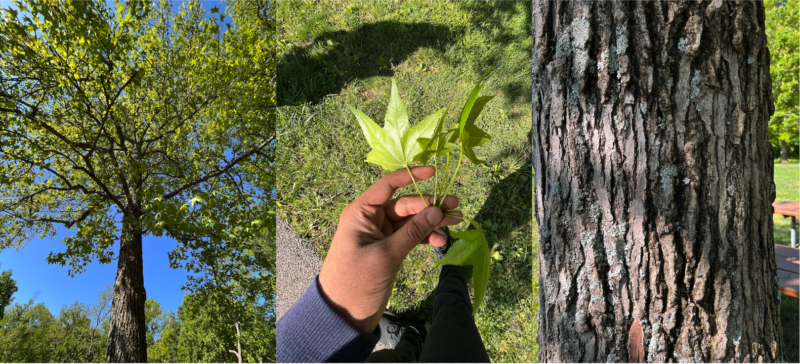
Embarking on my exploration of Darby Metro Park, I first encountered the Sweetgum, scientifically named Liquidambar styraciflua. Its star-shaped simple leaves are not easily mistaken. They have an alternate arrangement of simple leaves with 5-7 lobes and a serrated edge. I found this tree near the park entrance, bordering a park bench.
Interestingly, the Sweetgum’s resin has been utilized for its medicinal properties, being used in folk remedies for various ailments such as wounds and skin infections. (source:https://www.ncbi.nlm.nih.gov/pmc/articles/PMC4441155/).
Shagbark Hickory – Carya ovata
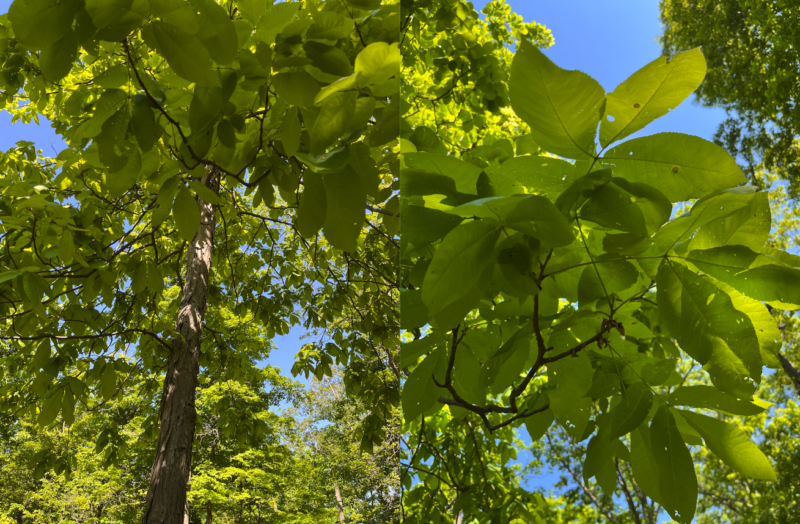
Next, I found the Shagbark Hickory or Carya ovata, aptly named for its peeling, “shaggy” bark. It has an alternate leaf arrangement with pinnately compound leaves, each having 5 leaflets with serrated edges. It stood tall in the forest section of the park, where the moist soil and shade provide an optimal environment.
A cool aspect about the Shagbark Hickory is that it’s a prime host to the Hickory Horned Devil caterpillar, which eventually transforms into the magnificent Regal Moth. (https://go-gale-com.proxy.lib.ohio-state.edu/ps/i.do?id=GALE%7CA633074840&sid=googleScholar&v=2.1&it=r&linkaccess=abs&issn=00308277&p=AONE&sw=w&enforceAuth=true&linkSource=delayedAuthFullText&userGroupName=colu44332&u=colu44332 ).
Black Walnut – Juglans nigra
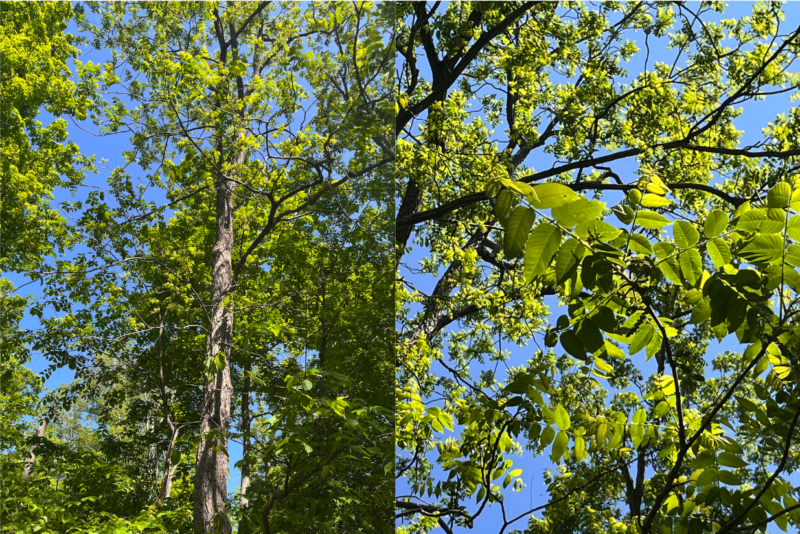
Next up, I encountered the Black Walnut or Juglans nigra. The Black Walnut possesses pinnately compound leaves, arranged alternately, with 15-23 leaflets. Its bark is dark and deeply furrowed, and it was nestled near the edge of a wooded area, with a trickling creek nearby.
An interesting fact is that the Black Walnut produces a chemical called juglone that can inhibit or kill other plants growing near it, a phenomenon known as allelopathy. (source:https://acsess.onlinelibrary.wiley.com/doi/abs/10.2134/jeq2006.0231?casa_token=cd6lfsBvQo0AAAAA:K8OxrXhj5gJKKBkA9yJZvThufwF8QhLgxxSEzt3sCM6w_GGOBDQLM2t1THYsZj7fpVJEn-MZM8rVBQ).
Blue Ash – Fraxinus quadrangulata

The Blue Ash (Fraxinus quadrangulata), distinguished by its unique square-shaped twigs and pinnately compound leaves, was spotted in a densely populated trail area of the park. This tree was young and was much more accessible that the larger surrounding Blue Ash trees. Its leaves, arranged oppositely, have 5-11 leaflets with serrated edges.
An interesting fact is that Blue Ash produces a blue dye when its inner bark is mixed with water, and was used by early American settlers to dye fabric. (source:https://www.sciencedirect.com/science/article/pii/S2468023022002206?casa_token=UthOweEvCKQAAAAA:F-8mVg8-m6jym5UhbCxBRV9mtsVEyEKm3Fhbs1c80lYoXVO8qsRYK2Feh5vneMc8z4AohjJ-).
Ohio Buckeye – Aesculus glabra
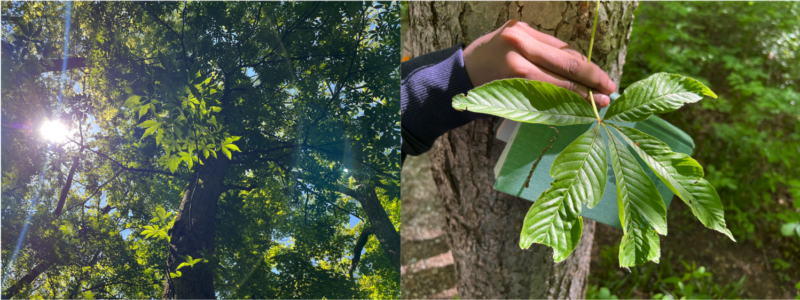
An unforgettable tree is Ohio’s beloved Ohio Buckeye or Aesculus glabra. This tree is easily distinguishable by its opposite, palmately compound leaves consisting of 5 leaflets. I spotted this tree on the side of a trail alongside many other buckeye trees, where it seemed perfectly content. In addition to the tree, I am very happy with how the pictures came out showing the sun illuminating the trees and capturing the true majesty of the Buckeye.
An intriguing fact about the Ohio Buckeye is its seeds, or ‘buckeyes,’ are toxic to humans and livestock if ingested, but they are a favorite amongst squirrels. (source: https://plants.usda.gov/DocumentLibrary/plantguide/pdf/pg_aegl.pdf)
Sugar Maple – Acer saccharum
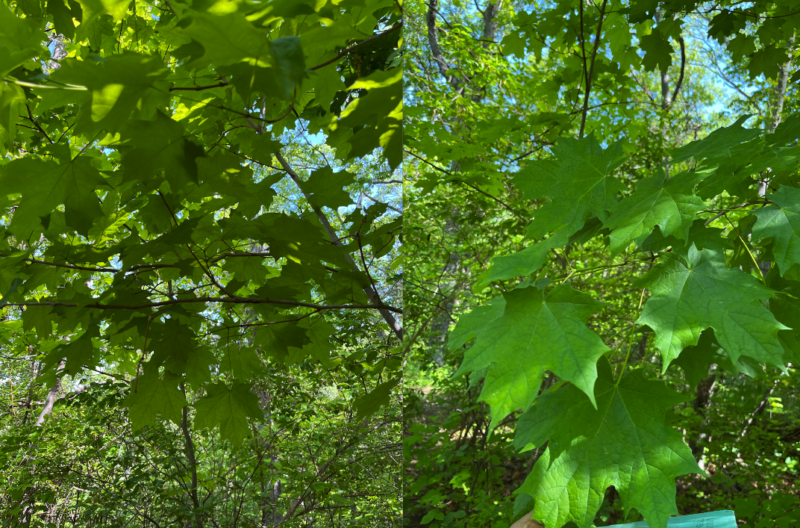
The Sugar Maple, or Acer saccharum, is unmistakable with its 3-5 lobed, oppositely arranged leaves. Glossy twigs and sharp buds complement its distinctive leaves. I encountered this specimen on the side of a trail near a trickling water source, indicating its preference for moist, well-drained soil.
A fascinating fact about the Sugar Maple is its sap, which is used to produce maple syrup. Native Americans were the first to discover and utilize this natural sweetener. (source: https://www.massmaple.org/about-maple-syrup/how-sugar-maple-trees-work/)
Pawpaw – Asimina triloba
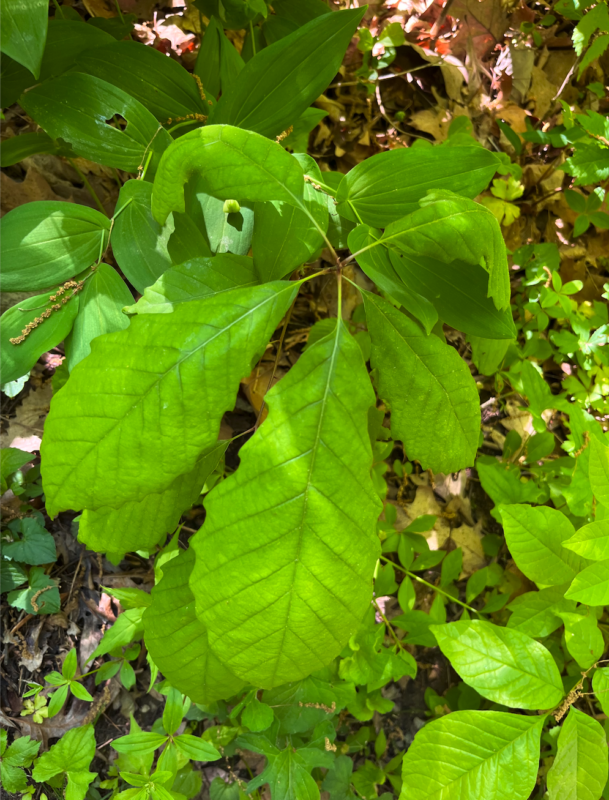
The Pawpaw, scientifically named Asimina triloba, is another noteworthy species. This young tree prefers the shade and sports large, simple, alternate leaves. I discovered a group of Pawpaws amongst some other shrubs, where they were shielded by the taller forest canopy.
The most exciting feature of the Pawpaw is the tropical-tasting fruit it produces, often described as a mix of banana, mango, and pineapple, which contrasts its temperate habitat. (source: https://www.seriouseats.com/what-are-pawpaws-wild-fruit-midwest-how-to-prep-and-eat-pawpaws. )
Basswood – Tilia americana
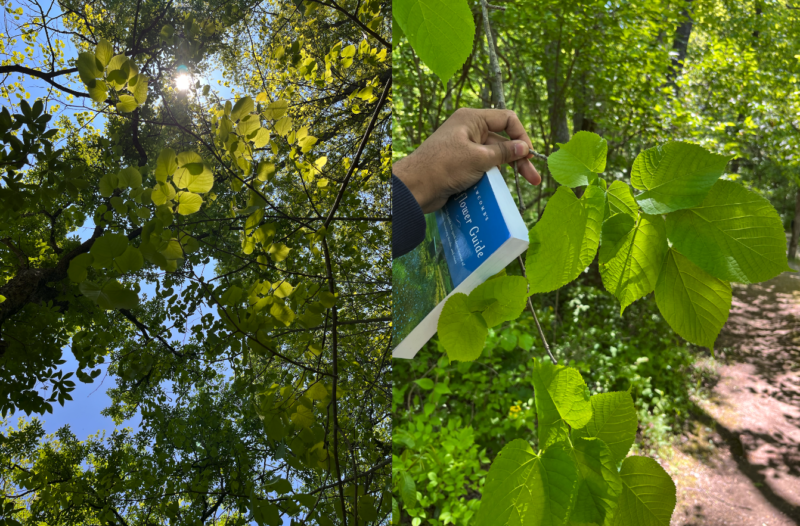
We then come to the Basswood or Tilia americana. The tree is characterized by heart-shaped, alternately arranged simple leaves with a somewhat lopsided base. This tree was standing tall in the middle of the forest, next to a bridge nestled between other tall trees.
An interesting fact is that the Basswood, also called the American Linden, is a favorite amongst beekeepers. Its fragrant flowers produce nectar that bees turn into honey with a unique, prized flavor. (source: https://bees.msu.edu/basswood/)
American Hophornbeam – Ostrya virginiana
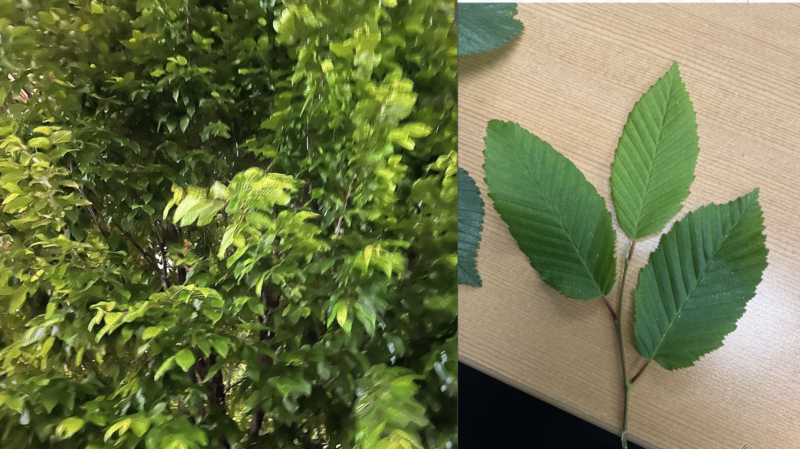
During my exploration of Columbus, I came across the Hornbeam, scientifically known as Ostrya virginiana. This tree stood gracefully near the edge of a wooded area, showcasing its distinct characteristics. The Hornbeam has simple, alternate leaves with double-serrate margins, which means the leaf edges have a fine, double-toothed appearance. Its leaves have prominent veins that curve and converge toward the tip.
One fascinating feature of the Hornbeam is its dense, hard wood, which has historically been used for tool handles and mallets due to its durability and resistance to splintering. Additionally, the tree’s dense foliage provides excellent cover for various bird species. (source: https://www.gardenersworld.com/how-to/grow-plants/how-to-grow-hornbeam-trees/
